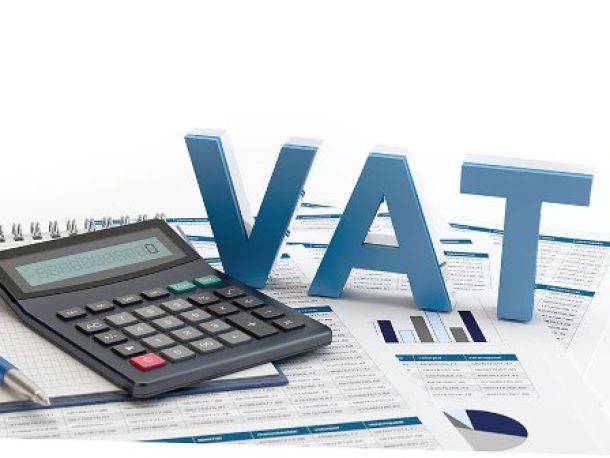Cut taxes to boost economy and reduce inflation
Spare a thought for the average South African, who is increasingly staring down the barrel of stagflation – a scary and dangerous concoction of escalating inflation, staggeringly high unemployment and an economy teetering on the brink of recession.
For a prolonged period of time South African businesses and consumers became accustomed to living with underwhelming economic growth and moderate inflation. Low inflation meant relatively low interest rates while economic growth was so anorexic that both economists and trade unionists agreed the growth was largely jobless.
But now the economic climate has regressed for the worse. In a short space of time the economy has swung from being moderately healthy to seriously sick. Our economy is infected with stagflation and needs urgent, co-ordinated policy treatment from the National Treasury and the Reserve Bank.
Stagflation comes from the marrying of two words – stagnation and inflation. South Africa’s economy is stagnant but at the same time it is experiencing surging inflation. Recent economic data shows that consumer inflation raced upwards to 7 percent in February, breaching the Reserve Bank’s 3 percent to 6 percent target range for a second month in a row. In January, consumer inflation surged to 6.2 percent and projections are that the target will remain breached until next year.
Since the introduction of inflation targeting in 2000 the Reserve Bank has been successful in keeping inflation within the target range, mercilessly hiking interest rates whenever inflation threatens the upper level of the target to quell it.
The current escalation in inflation is coinciding with the bleak projection that growth will slow to 0.8 percent this year, registering the weakest growth since the 2009 recession. The economy grew a meagre 1.3 percent last year and 1.4 percent a year before. Between 1993 and 2015 GDP (gross domestic product) grew at an average of 2.97 percent, reaching a post-apartheid high of 7.6 percent in the fourth quarter of 1994 and a record low of 6.10 percent in the first quarter of 2009.
It is no wonder this weak growth performance has failed to make a dent in unemployment, which stands at a staggering 24.5 percent. To put this in human terms, in the fourth quarter of last year there were 5.2 million unemployed adults in South Africa, but if you add the 2.3 million discouraged job seekers, the unemployment rate pushes to over 40 percent.
These statistics make it clear South Africa’s economy is constrained and requires interventions to unshackle the growth chains. Instead of breaching the perennial 3 percent growth ceiling, it is now heading south while inflation is surging upwards.
Surging inflation
In old economics literature these two conditions are not supposed to occur simultaneously, but this economic thinking changed in the 1970s when an oil shock (caused by a sharp surge in oil prices) triggered stagflation that led to a devastating slump in global demand and unleashed rampant inflation.
During the 1970s, recessions and busts were treated using Keynesian economic doctrine. John Maynard Keynes’s argument was that recessions are caused by a dip in aggregate demand, but this could be rectified by implementing a fiscal stimulus that increases public works spending.
Build bridges and roads and put the unemployed to work, thereby boosting household spending while companies increase production in response to increased household demand.
Keynes’s brand of economics rose to prominence in the late 1930s after the then US president Franklin D Roosevelt (FDR) adopted Keynes’s fiscal policy recommendations to haul up the American economy out of the 1937/38 Great Depression that led to high unemployment and a sharp fall in aggregate demand. Ironically, it was FDR’s budget spending cuts that pushed the US economy into the recession.
But Keynes’s fiscal policies were not designed to deal with “stagflation”. Slamming the foot on the spending accelerator boosts demand but it also fuels inflation. On the other hand, tightening monetary policy through hiking interest rates kills inflation, but worsens the economic slump.
This is a dilemma that stagflation poses to policymakers. In the 1970s, however, Canadian-American economist Robert Mundell, who is best-known as the pioneer of the supply-side economics of the euro, came up with revolutionary economic thinking at the time, which turned Keynesian doctrine on its head.
Mundell argued that stagflation was a symptom of low aggregate supply as opposed to a slump in aggregate demand. He proposed a fiscal stimulus in the form of deep tax cuts that he argued would cure stagflation. Mundell believed that investment and production would automatically increase if you reduce taxes, leading to a spike in employment and availability of goods and services in the economy.
Aggregate supply
As the supply of goods and services increased, prices would go down, reducing inflation as aggregate supply keeps up or even outpaces aggregate demand.
Ramping up production and employment creation boost the economy and the tax base, ensuring the government collects more revenue.
When former US president Ronald Reagan rose to the White House in 1981, he immediately adopted Mundell’s tax cuts. This fiscal policy, known as Reaganomics, was successful in making stagflation disappear, increasing production while inflation fell. It will be interesting to see how South African policymakers tackle stagflation. South Africa’s economic growth is held back by low aggregate supply, not aggregate demand.
Our growth has further been asphyxiated by a myriad of factors: persistent labour strikes, rising electricity prices, shortage of skilled labour, high interest rates, mediocre infrastructure and corruption as well as an investment strike by big business in response to the country’s restrictive and complex legislation.
Sadly, authorities have relied on hiking interest rates to tame inflation (fuelled by a drought and a weak rand) but there is no clear strategy for dealing with the other side of the stagflation dilemma – weak and stagnant economic growth.
To get out of the stagflation hole the government will have to consider Mundell’s fiscal solution – cut taxes to relieve extreme cost pressures on businesses and consumers immediately.
Beyond this, government needs to address the skills scarcity, simplify red tape and consider privatising state-owned entities that are a drag on economic growth and prudently manage the ones that it needs to stimulate investment to boost the productive capacity of the economy. Judging by how SA Revenue Service commissioner Tom Moyane was paraded in triumph recently after he collected R1 trillion in revenue, tax cuts are wishful thinking that will fall on deaf ears.
* Andile Ntingi is the chief executive and co-founder of GetBiz, an e-procurement and tender notification service.
** The views expressed here do not necessarily reflect those of Independent Media.
BUSINESS REPORT
News Category
- International retailers
- On the move
- Awards and achievements
- Legislation
- Wine and liquor
- Africa
- Going green
- Supplier news
- Research tools
- Retailer trading results
- Supply chain
- Innovation and technology
- Economic factors
- Crime and security
- Store Openings
- Marketing and Promotions
- Social Responsibility
- Brand Press Office
Related Articles

Empowering South African households through gro...

SPAR shares practical tips to beat food inflation

South African motorists could be paying up to R...

Big VAT changes on the cards


